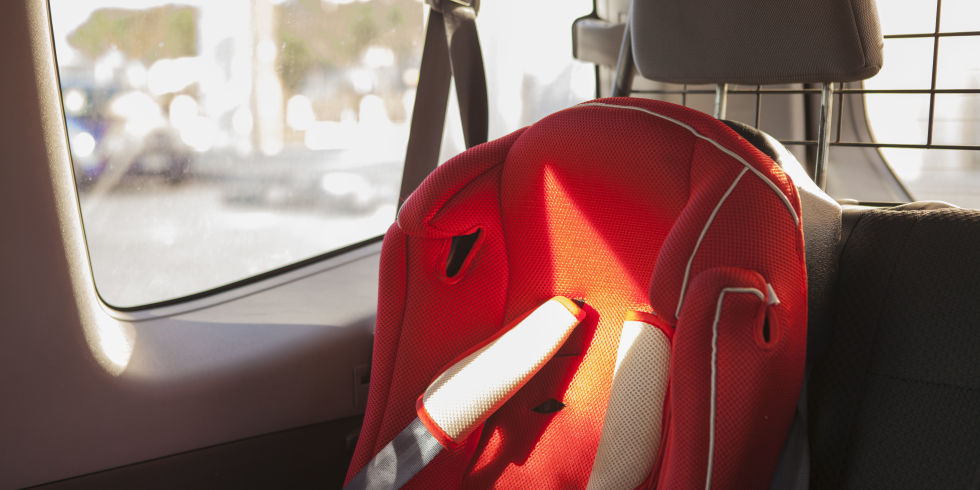Hot Car Deaths: What You Can do to Help

Did you know that the vast majority of hot car deaths occur in areas where extreme heat is usually not a problem? In fact, there are very few deaths that happen in places where you would expect numbers to be higher. This is one of the reasons that it’s so important to know what happens once you park a car and roll up the windows in the hot sun. Let’s take a closer look at the problem along with what you can do to help if the situation warrants.
Heat Absorption
Glass, even tinted windows, allow radiation from the sun to penetrate into the passenger cabin. This radiation is what causes the generation of heat. Heat forms on dashboards, the steering wheel, seats, the floor and everywhere else in the inside of a vehicle. The heat that is generated does not exit through the windows in the same way that radiation comes in. Instead, it warms the inside air, which in turn, generates more heat. This is a cycle that only breaks, for the most part, once the doors and windows are opened or once the sun goes away.
Depending on the intensity of the sunlight, combined with ambient air quality, temperatures can rise to almost 50 degrees higher inside of the vehicle than outside. And, temperatures can increase by that much in less than 30 minutes. Imagine a 90 degree day, and you can see how dangerously-hot things can get in a short amount of time.
Not only that, but the temperatures of the various surfaces inside the passenger cabin can reach nearly 200 degrees, including the plastic around baby seats, upholstery and door panels. Consequently, the danger to occupants and pets can be magnified by the actual air temperature as well as the heat radiating off of interior surfaces.
Cracking Windows and Shade

Cracking windows will allow some of the heat to escape and cap internal air temperatures to around 30 degrees higher than outside in most cases. However, this may not be enough to protect occupants that are stuck inside of the vehicle. Parking under the shade will offer some protection, but the ambient air temperature can still cause the passenger cabin to be much hotter than the outside also. While these steps can be used to provide some relief when it comes to getting back into a vehicle that is not as hot, the danger is still there.
Forgotten or Misinformed

The vast majority of child hot car deaths occur because the parents or adults responsible simply forgot they were in the vehicle. The second leading cause of death is from adults leaving children unattended in a vehicle for “just a few minutes”. The vast majority of animal deaths occur because the owners mistakenly believe that pets can withstand higher temperatures more easily. Some owners also provide pets with water, thinking that they will remain cooler while they go inside and shop. In all cases, these types of deaths are completely avoidable. The solution is to make sure that you always double check that no one is in your vehicle before you lock the door and walk away.
What to do if You See Someone Trapped

The first thing that you should do, in every situation, is call 911. This will ensure that emergency services are on the way, even if they are not needed later on. You never want to take chances. The second thing to do is to see if any of the doors are unlocked so you can simply open the vehicle to release heat.
If you can’t open the doors, and there’s no sign of the parents or owner of the vehicle, then it’s up to you to make the judgment call regarding breaking the window. It’s not an easy decision to make, especially considering the potential liabilities involved. However, it’s also more sensible, in many people’s opinion, to err on the side of caution.
Vehicle windows tend to break easier with pin-point or tools with small heads as opposed to blunt objects. If you have a glass breaker, the butt of a flashlight or a crow bar, strike the window with a few quick and forceful blows to shatter the glass. Make sure that you break the window that is the farthest away from the occupant in order to minimize the chances of injury.
Once the glass has been shattered, cover your hand and arm with any material you have on hand to protect the skin from shards of glass. Gently brush away some glass that remains intact until you are able to reach inside and unlock the door. Open the door and then proceed to unlock the door that will provide you with the easiest access to the occupant. Assess the condition of the occupant to determine if they need first aid or water, or whether they are uninjured. Stay with the occupant until emergency services, parent or vehicle owner arrives and explain why you did what you did.
Remember that it only takes a few minutes for someone to succumb to heat illness inside of a locked vehicle. Assessing the situation and taking decisive action can mean the difference between life and death, and it’s up to you to be prepared to intervene if necessary.

